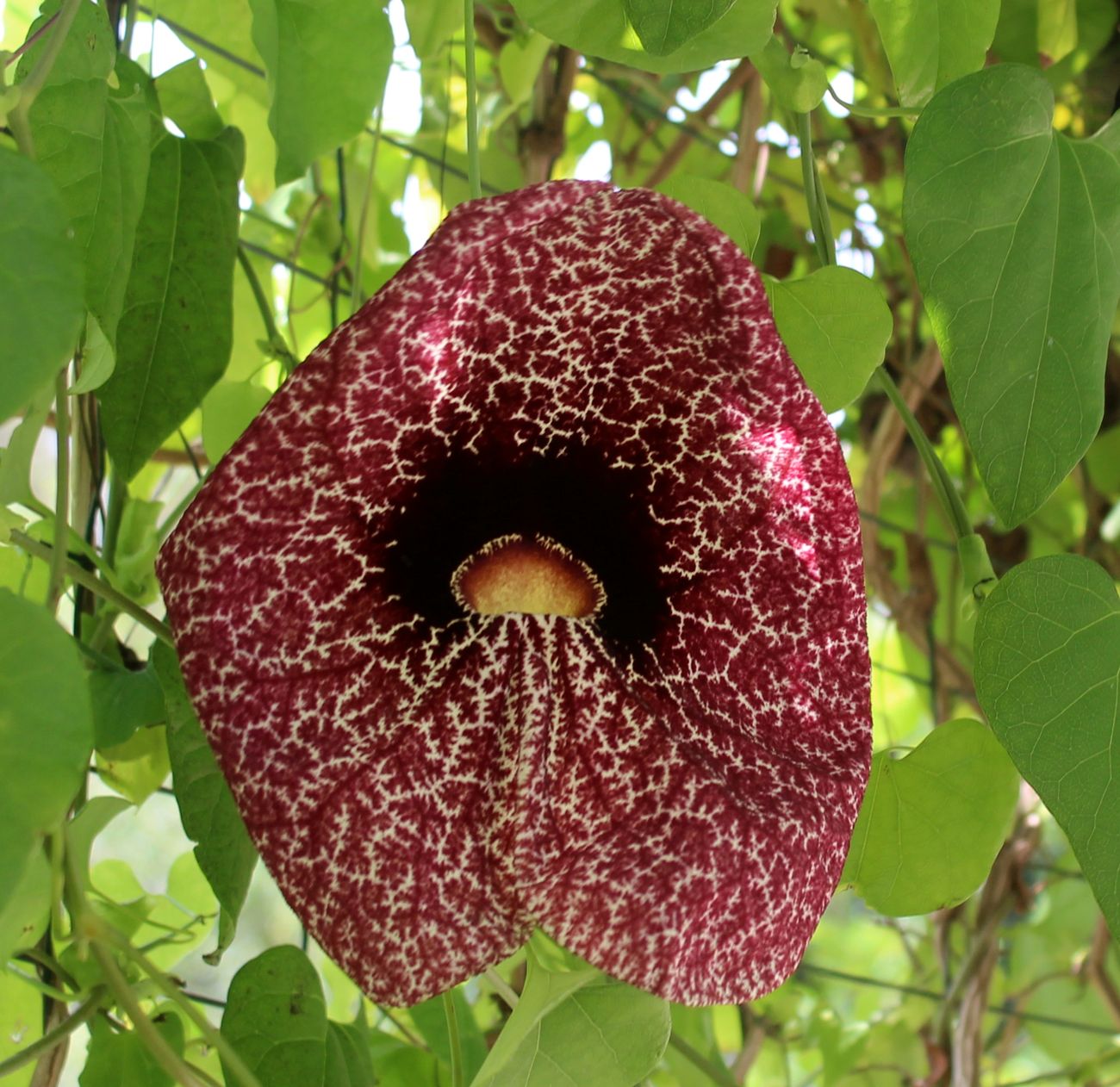Aristolochia gigantea
Scientific name: Aristolochia gigantea Mart.
Family: Aristolochiaceae
Common name: Brazilian Dutchman's Pipe, Giant Pelican Flower
The large-flowered aristoloquia is an evergreen climbing plant native to Brazil and Colombia. It is striking for the rarity of its flower, which is dark maroon with white spots. It is large in size, about 30 cm, and has no petals; the calyx is globular and greenish in colour, and extends into a tube that ends in a trumpet-shaped opening. The smell is not pleasant, although not as bad as in other species of this genus, it is the way it attracts flies. The flower tube is covered with hairs and waxes, so that they slip down and cannot come out until, once fertilised and withered, the fly is released to fly loaded with pollen to another flower. The leaves are thin and heart-shaped. The fruit is an elongated capsule of about 8 cm which, when opened, releases numerous sedes.
The name of this genus comes from the Greek, aristos meaning excellent and lochia referring to childbirth. It may be due to the shape of the flower before opening, which recalls the image of a foetus, but it may also refer to the fact that some of these species were formerly used in obstetrics to induce childbirth. Other properties are attributed to it, and as early as the 1st century, Dioscorides attributed to it properties against snake bites. Scientific research has shown that the plant does indeed contain alkaloids with these qualities, but it also contains aristolochic acid, a dangerous toxin.
It is a very suitable species for covering walls or fences; it is easy to grow, although it does not tolerate intense cold. At La Concepción it can be seen on the fence separating the Mediterranean rockery from the cafeteria.

